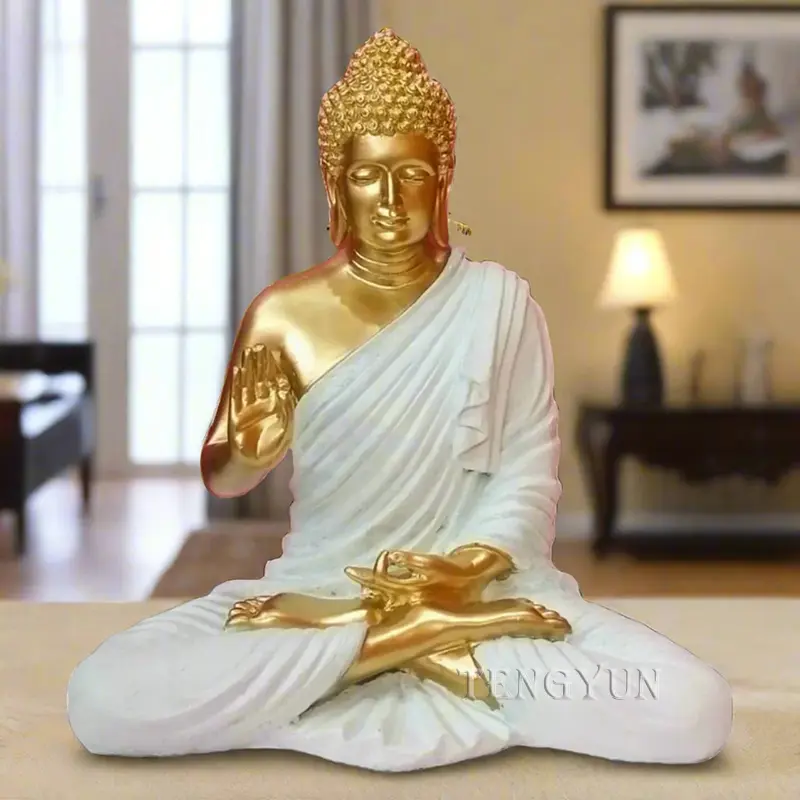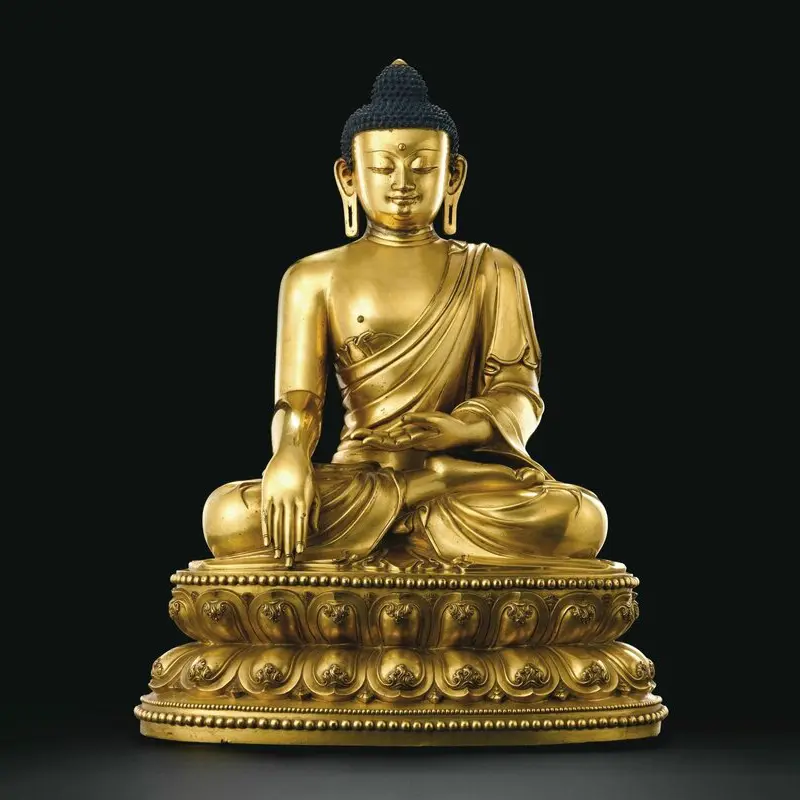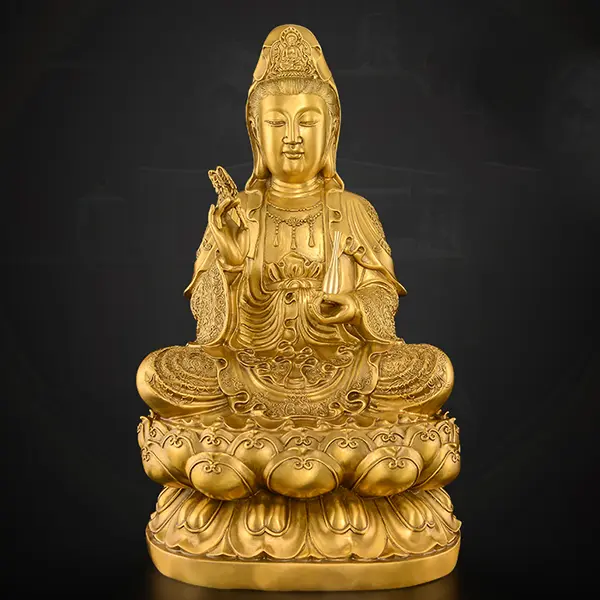Bronze Buddha & Religious Statue
A bronze Buddha statue embodies serenity, wisdom, and artistic mastery, making it a meaningful addition to gardens, temples, and private collections. The durability of bronze allows these sculptures to withstand time and weather, ensuring both spiritual and decorative value in diverse settings.
In larger spaces, a large bronze Buddha statue creates a commanding presence. Its scale enhances the sense of reverence and tranquility, often becoming the focal point of meditation gardens, courtyards, or religious institutions. These pieces not only reflect craftsmanship but also symbolize spiritual protection.
Among the most beloved forms is the bronze laughing Buddha statue, associated with joy, prosperity, and good fortune. This cheerful figure brings warmth and positivity to homes and public areas, blending cultural symbolism with artistic expression.
For more intricate spiritual representation, the 4 faced bronze Buddha reflects wisdom and compassion in multiple aspects, offering a deeper symbolic meaning. This type of statue is often chosen for sacred sites or as a statement piece in private collections.
A finely crafted bronze Buddha sculpture highlights detailed artistry, from facial expressions to flowing robes, capturing both realism and spiritual essence. Each piece demonstrates the timeless quality of bronze and the skill of artisans who bring cultural heritage to life.
The traditional bronze Buddha has long been admired across cultures, representing enlightenment and peace. Its adaptability allows it to complement modern gardens, classical temples, and interior spaces alike.
In terms of craftsmanship, a cast bronze Buddha demonstrates the precision and durability of bronze casting techniques. This method ensures strength while preserving delicate details, making it suitable for both small devotional statues and monumental outdoor pieces.
Collectors often seek an antique bronze Buddha for its historical significance and patina that reflects centuries of spiritual use. These statues embody cultural heritage and remain treasured as both artistic and sacred artifacts.
Artistic Value and Symbolism of Bronze Buddha Creations
The timeless appeal of a bronze Buddha sculpture lies in the way it unites artistry with spirituality. Crafted through traditional casting methods, these works capture even the finest details of expression, robe texture, and posture, offering more than decoration—they convey wisdom and peace. Collectors and designers alike often consider how the bronze Buddha statue price reflects not only scale and complexity but also heritage, making each acquisition a matter of cultural as well as aesthetic value.
In gardens and temple courtyards, a large bronze Buddha becomes a striking centerpiece. Its commanding presence brings a sense of stillness, transforming open landscapes into places for reflection. By contrast, a small bronze Buddha statue provides intimacy, perfect for private shrines or meditation corners where subtle spiritual resonance is desired. Both large and small forms demonstrate how bronze adapts to diverse settings without losing symbolic meaning.
Beyond statues of full figures, ornaments such as a bronze Buddha ornament offer flexibility. These smaller decorative pieces complement interiors, bringing quiet symbolism to homes, meditation rooms, or galleries. Similarly, a vintage bronze Buddha is admired not just for its artistry but also for the patina that develops over time, embodying cultural memory and connecting the present to centuries of devotion.
Head sculptures hold special significance as well. A bronze Buddha head antique reveals refined features that radiate compassion and inner calm. Whether displayed in a private collection or a museum, it highlights craftsmanship while carrying symbolic depth. Likewise, an antique bronze Buddha head is treasured for its authenticity, often sought by collectors for both historical value and enduring beauty.
Each form—large or small, modern or vintage bronze Buddha—illustrates the versatility of bronze as a medium. Resistant to weathering yet capable of capturing delicate details, bronze ensures that these sacred artworks endure for generations. Whether serving as focal points in gardens, ornaments in homes, or revered pieces in temples, they remain lasting embodiments of peace and enlightenment.
Timeless Significance of Bronze Buddha Statues
The beauty of Buddhist sculpture lies in how it connects artistry with spirituality. A finely crafted cast bronze Buddha captures not only physical detail but also conveys serenity, making it suitable for both sacred and decorative settings. When placed in gardens, a bronze Buddha garden statue creates a calming focal point that harmonizes with natural surroundings. Larger installations such as a life size bronze Buddha statue are often chosen for courtyards or cultural centers where their presence inspires reflection.
Collectors and enthusiasts frequently search for a bronze Buddha for sale, appreciating the balance between durability and symbolism. The market also offers numerous bronze Buddha statues for sale, with variations ranging from smaller ornamental pieces to monumental works. In outdoor spaces, an outdoor bronze Buddha statue provides a sense of peace while withstanding the elements, while a garden bronze Buddha statue offers a more subtle touch, blending seamlessly with plants and pathways.
Historical pieces are especially valued. An antique bronze Buddha statue often carries a story, with aged patina and unique details that reveal its journey through time. Similarly, an antique bronze Buddha holds cultural significance and is highly prized among collectors who seek authenticity and heritage. By contrast, contemporary works demonstrate technical precision, yet both old and new sculptures embody spiritual meaning.
Sacred environments highlight the importance of scale and symbolism. A temple bronze Buddha statue often becomes the central element of worship, drawing the eye and guiding meditation practices. Meanwhile, private collectors may choose smaller versions for homes or gardens, knowing that even modest pieces can carry profound symbolism.
From personal devotion to architectural landmarks, each sculpture demonstrates how bronze, with its strength and timeless quality, preserves the essence of Buddhist art. Whether antique or newly crafted, placed indoors or outdoors, these statues remain lasting embodiments of peace, craftsmanship, and cultural continuity.
Symbolism and Diversity of Bronze Buddha Sculptures
The spiritual presence of Buddhist art is often conveyed through different postures and expressions that reflect the many paths to enlightenment. A laughing bronze Buddha embodies joy and prosperity, frequently chosen as a welcoming figure in both gardens and indoor spaces. By contrast, the calm expression of a meditating bronze Buddha speaks to introspection and focus, often placed in meditation rooms or tranquil outdoor corners where silence and stillness are valued.
Among traditional figures, a bronze Shakyamuni Buddha holds a central place as a reminder of the historical teacher who achieved enlightenment. Equally revered is the bronze Amitabha Buddha, symbolizing boundless compassion and eternal light, commonly installed in temples or used for private devotion. These specific depictions reflect the diversity of Buddhist belief and the artistry that brings each form to life.
Scale and posture also play important roles in interpretation. A standing bronze Buddha conveys energy, guidance, and readiness to engage with the world, while a sitting bronze Buddha emphasizes groundedness and peace. Both forms are sought after for different settings, whether in sacred halls or cultural landscapes. Similarly, the detailed features of a bronze Buddha head highlight the skill of artisans who capture subtle expressions of wisdom and serenity in finely cast metal.
Across Asia and beyond, the tradition of the Chinese bronze Buddha sculpture has influenced the development of these works, admired for their precise casting techniques and enduring material. Bronze not only allows intricate detail but also provides durability, making these statues suitable for long-term display in temples, gardens, or private collections.
Each variation, whether joyful, contemplative, seated, or standing, demonstrates how bronze artistry carries forward centuries of cultural heritage. These sculptures are more than objects; they are embodiments of philosophy, crafted to inspire peace, balance, and reflection in the spaces they occupy.













